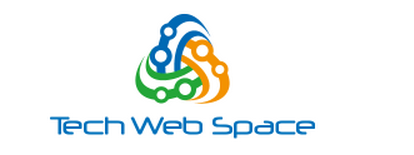
Raw data is often incomplete, inconsistent, or lacks context. The raw data must be thoroughly enriched to make good use of it. Enrichment makes it possible to extract meaningful insights that drive strategic decision-making, resulting in tangible benefits
By enriching their data, businesses unlock several benefits that can drive them toward increased revenue, improved efficiency, and enhanced customer experiences.
The strategic importance of data enrichment
Enriched data allows businesses to gain a deeper understanding of their customers, such as their demographics, interests, and purchasing habits.
It thus helps to personalize marketing campaigns, improve customer service, and develop targeted products and services. Data enrichment gives businesses a strategic advantage, enabling them to improve their services and operations, ultimately resulting in greater revenue.
Let us consider some real-world examples of data enrichment giving tangible benefits to businesses. These will help us see more clearly why data enrichment is important.
Three examples of how data enrichment helps businesses
Personalized marketing leading to higher engagement
Tailoring messaging according to customer’s preferences is nearly impossible when there’s insufficient information. How could an email campaign, for example, be personalized when the email address is your only information? A generic message is ineffective and puts off customers: 62 percent of customers said they wouldn’t engage with a brand that doesn’t offer personalized experience, according to a Segment report.
Enriching customer data with demographic details, purchase history, social media activity, etc. provides a clearer picture of customers. This will allow brands to understand their customers and segment their customer base into distinct groups with specific needs and preferences, enabling them to personalize customer communications. It can even shape the development of new products and the evolution of existing products.
Consider, for example, how Amazon enriches customer data to enhance personalization. It uses information from social media platforms to enrich existing data. This enables it to determine more precisely what customers are interested in buying and allows it to provide tailored advertisements. The result of greater personalization is higher engagement and increased brand loyalty. The Segment report also noted that close to three-fifths of customers said personalized experience would turn them into repeat buyers.
Enhanced risk assessment and fraud detection
Interest in data enrichment in the insurance and banking sectors is rising. Over 80 percent of car insurers in the UK share policy history data including No Claims Discount information and enriching customer data. This helps them address fraudulent applications, understand claims risk, and accurately evaluate the chances of future cancellations. Knowing, for example, that a person with two past cancellations is twice as likely to cancel a policy again helps reduce loss costs.
Enriching data to enhance risk assessment goes beyond getting a complete picture of customers. Insurance companies use location data to improve property assessments and claim times. For instance, insurers enriched property details with seismic and weather data to determine the risk due to natural events.
Financial institutions similarly leverage data enrichment to help them make informed lending decisions, mitigate risk exposure, and identify fraudulent transactions. This is facilitated by enriching customers’ data with credit bureau reports, employment details, and behavioral information such as frequency, time, or location of transactions. A more complete picture that emerges from enrichment also allows firms to detect anomalies in spending patterns or login attempts, potentially indicating fraudulent activity. This helps them take necessary measures to protect customers.
Improved operational efficiency
In manufacturing, logistics, or inventory and supply chain management, bottlenecks can come from many fronts. Relying solely on internal and historical data to predict trends will not suffice. Forecasts based only on internal data will often be inaccurate, which would result in stockouts or excess inventory. Data enrichment offers a suitable answer to this challenge.
Location data, for example, can help businesses discover inefficiencies in the supply chains and improve them. Location-based enrichment supplies information from different areas, connecting data from different departments and vendors. External data such as weather information, traffic updates, and supplier performance add more context to existing data. This helps in strategically planning and managing the supply chain.
Enrichment thus provides better visibility into potential supply chain setbacks, allowing businesses to proactively adjust production schedules, minimize disruptions, and maintain smooth operations.
Data enrichment best practices
The potential benefits of data enrichment are vast. However, the process of data enrichment can be tedious. From sourcing external data to appending additional information, careful planning and execution are required. Besides, specialized tools and expertise are needed. You could do it in-house or outsource data enrichment to experts. Outsourcing B2B data enrichment has some advantages. For instance, you wouldn’t need to invest in tools or personnel, and it offers more flexibility.
Nevertheless, if you are doing it in-house, here are five data enrichment best practices you should follow.
1. Define clear objectives and business value
Begin the enrichment process by identifying specific business problems or opportunities. These should be concrete and, ideally, measurable. They may improve customer service, increase sales, or reduce operational costs.
2. Make the process reproducible
Since data enrichment will seldom be a one-time process, it is important to ensure each enrichment task is reproducible by standardizing common tasks and making the process rule-driven. This will ensure that the process is repeatable and the results remain consistent.
3. Set clear evaluation criteria
The data enrichment process involves multiple interconnected tasks. Establish a clear evaluation criterion for each task. The criteria have to be linked to the business goals you have set and measurable against them. The evaluation criteria serve as milestones, helping you assess what’s working and what needs adjustment within the data enrichment process.
4. Continuously monitor and evaluate
Monitor the quality and effectiveness of data enrichment regularly and assess the impact of the enriched data on your business objectives. This will help you identify areas for improvement and iterate the process.
5. Tie up enrichment with cleansing
The best practices you follow would be pointless and the enrichment efforts fruitless if the initial data are inaccurate. So, cleansing your data before enriching it is critical. Cleansing lays a strong foundation of accurate data and ensures the enrichment is impactful.
In a nutshell
Information is power. Enriching existing information makes it extra potent. Data enrichment transforms fragmented data points and provides a holistic view. The comprehensiveness helps unearth actionable insights and unlocks the full potential of the data. The enriched data empowers businesses to make informed decisions, understand their customers better and offer personalized experiences, and enhance operational efficiency, among other things.

